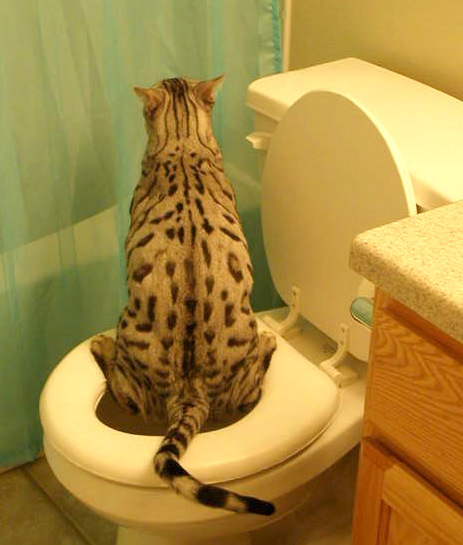Why You Mustn't Flush Cat Poop Down Your Toilet - Maintain Your Pipe Health
Why You Mustn't Flush Cat Poop Down Your Toilet - Maintain Your Pipe Health
Blog Article
We have uncovered the article relating to How to Dispose of Cat Poop and Litter Without Plastic Bags directly below on the web and thought it made perfect sense to share it with you on this site.

Introduction
As pet cat owners, it's important to bear in mind how we take care of our feline pals' waste. While it might appear hassle-free to flush cat poop down the bathroom, this method can have damaging effects for both the setting and human health.
Alternatives to Flushing
Fortunately, there are safer and much more responsible ways to throw away feline poop. Think about the following choices:
1. Scoop and Dispose in Trash
One of the most common approach of disposing of pet cat poop is to scoop it into a biodegradable bag and toss it in the trash. Make sure to use a committed trash scoop and take care of the waste quickly.
2. Usage Biodegradable Litter
Opt for naturally degradable pet cat litter made from materials such as corn or wheat. These clutters are environmentally friendly and can be safely taken care of in the garbage.
3. Bury in the Yard
If you have a yard, think about hiding feline waste in a designated location away from vegetable gardens and water sources. Make certain to dig deep sufficient to prevent contamination of groundwater.
4. Mount a Pet Waste Disposal System
Invest in a family pet garbage disposal system specifically made for cat waste. These systems use enzymes to break down the waste, lowering smell and ecological impact.
Health Risks
In addition to environmental problems, purging feline waste can also posture health and wellness threats to humans. Feline feces might include Toxoplasma gondii, a bloodsucker that can cause toxoplasmosis-- a potentially extreme illness, specifically for expecting females and individuals with damaged immune systems.
Ecological Impact
Purging cat poop presents dangerous virus and parasites into the water system, positioning a substantial risk to water ecological communities. These contaminants can negatively affect aquatic life and compromise water quality.
Conclusion
Responsible pet possession extends beyond providing food and sanctuary-- it additionally involves correct waste management. By refraining from purging cat poop down the commode and going with alternative disposal approaches, we can lessen our environmental footprint and shield human health and wellness.
Why Can’t I Flush Cat Poop?
It Spreads a Parasite
Cats are frequently infected with a parasite called toxoplasma gondii. The parasite causes an infection called toxoplasmosis. It is usually harmless to cats. The parasite only uses cat poop as a host for its eggs. Otherwise, the cat’s immune system usually keeps the infection at low enough levels to maintain its own health. But it does not stop the develop of eggs. These eggs are tiny and surprisingly tough. They may survive for a year before they begin to grow. But that’s the problem.
Our wastewater system is not designed to deal with toxoplasmosis eggs. Instead, most eggs will flush from your toilet into sewers and wastewater management plants. After the sewage is treated for many other harmful things in it, it is typically released into local rivers, lakes, or oceans. Here, the toxoplasmosis eggs can find new hosts, including starfish, crabs, otters, and many other wildlife. For many, this is a significant risk to their health. Toxoplasmosis can also end up infecting water sources that are important for agriculture, which means our deer, pigs, and sheep can get infected too.
Is There Risk to Humans?
There can be a risk to human life from flushing cat poop down the toilet. If you do so, the parasites from your cat’s poop can end up in shellfish, game animals, or livestock. If this meat is then served raw or undercooked, the people who eat it can get sick.
In fact, according to the CDC, 40 million people in the United States are infected with toxoplasma gondii. They get it from exposure to infected seafood, or from some kind of cat poop contamination, like drinking from a stream that is contaminated or touching anything that has come into contact with cat poop. That includes just cleaning a cat litter box.
Most people who get infected with these parasites will not develop any symptoms. However, for pregnant women or for those with compromised immune systems, the parasite can cause severe health problems.
How to Handle Cat Poop
The best way to handle cat poop is actually to clean the box more often. The eggs that the parasite sheds will not become active until one to five days after the cat poops. That means that if you clean daily, you’re much less likely to come into direct contact with infectious eggs.
That said, always dispose of cat poop in the garbage and not down the toilet. Wash your hands before and after you clean the litter box, and bring the bag of poop right outside to your garbage bins.
https://trenchlesssolutionsusa.com/why-cant-i-flush-cat-poop/

I was guided to that write-up on How to Dispose of Cat Poop and Litter Without Plastic Bags through an acquaintance on a different blog. Make sure you take the time to distribute this post if you appreciated it. Thanks for your time invested reading it.
Find Out More Report this page